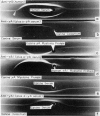Abstract
Anti-2,4-dinitrophenyl reaginic antibody has been induced in the atopic dog and compared with anti-ragweed reaginic antibody of spontaneous canine atopic hypersensitivity. Immunization of an atopic dog with ragweed hypersensitivity with dinitrophenylated ragweed pollen produced a high and sustained level of canine reaginic anti-DNP antibody. The induced and spontaneous forms of canine reaginic antibodies were shown to be identical in heat lability, sulfhydryl sensitivity, molecular size, charge, in their ability to remain fixed at passively-sensitized dermal sites for a prolonged period, and in their capacity to sensitized homologous white blood cells from normal donors for an immunospecific release of histamine. The induced anti-DNP and spontaneous anti-ragweed reaginic antibodies were physically separated and immunochemically differentiated from six other classes of canine immunoglobulins: γ2a, γ2b, γ2c, γ1, γA and γM, and shown to be members of a distinct class of canine immunoglobulins analogous to human γE (IgE).
A high incidence of spontaneous atopic hypersensitivity has been observed in the progeny of the atopic dog.
Full text
PDF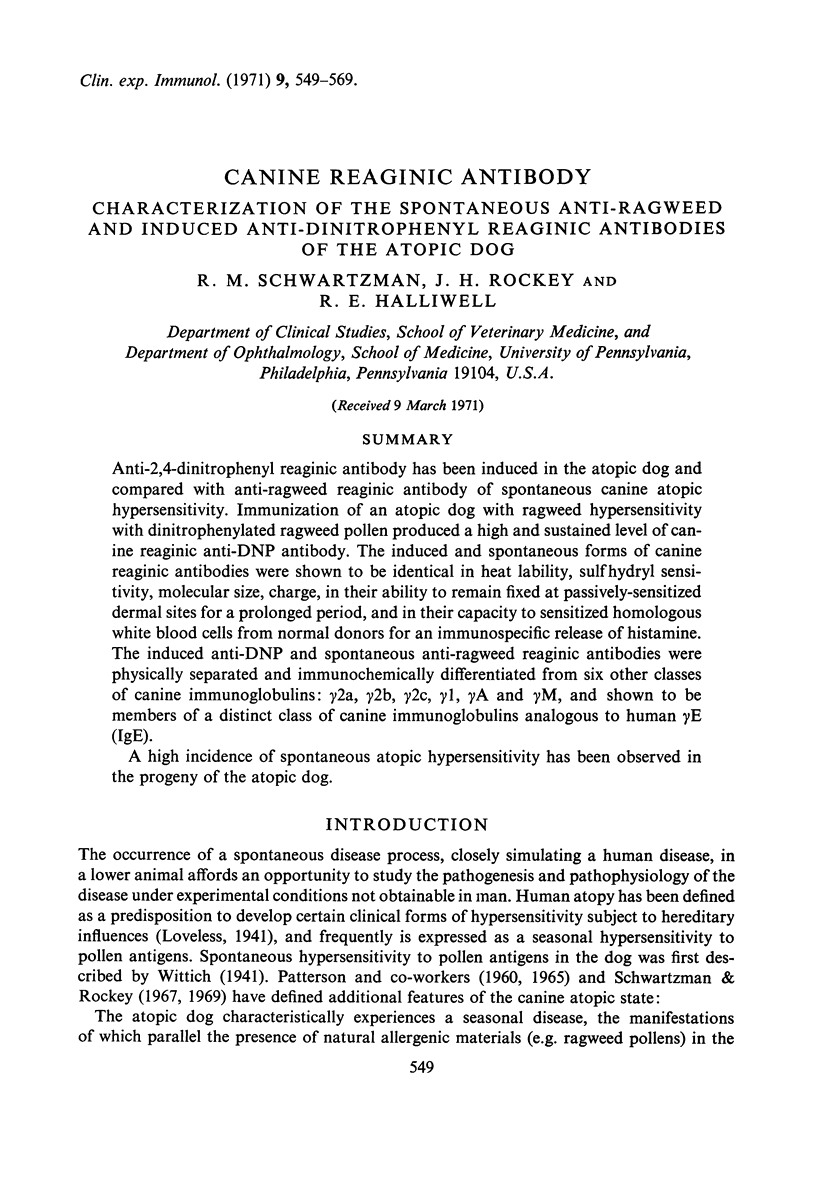
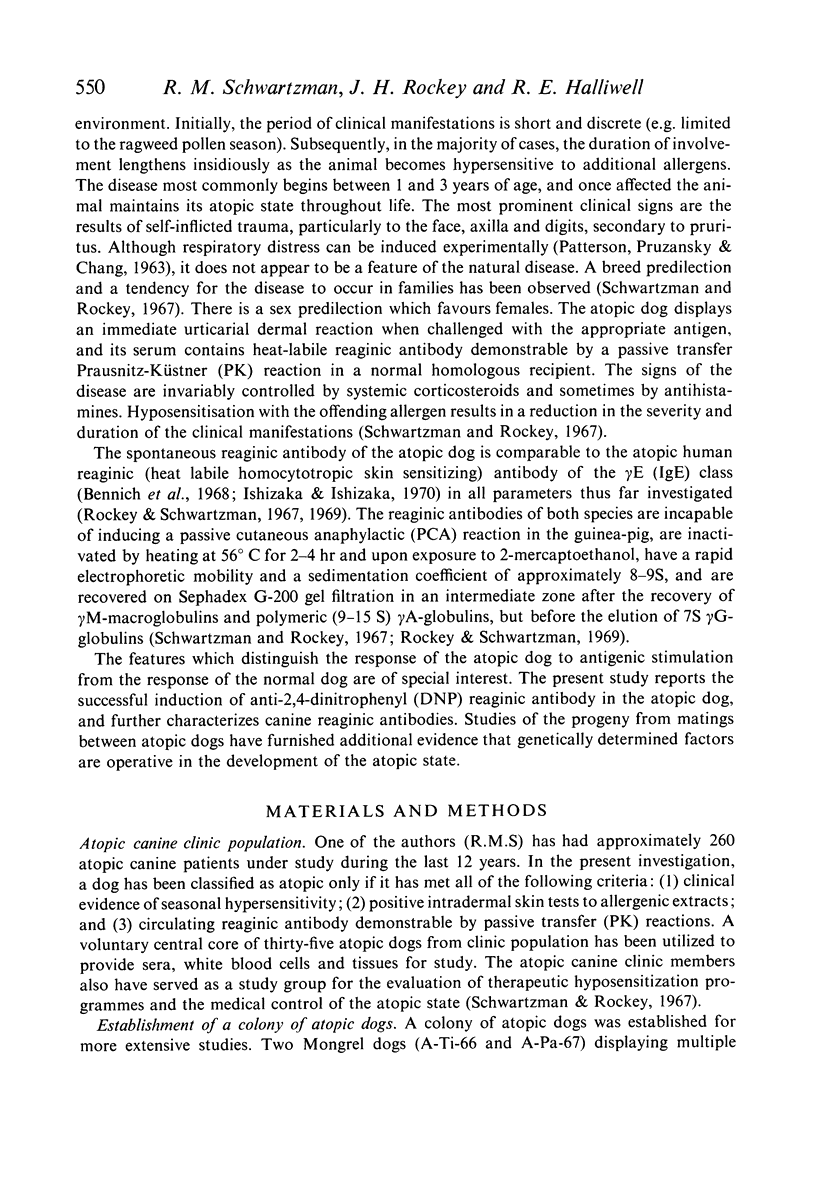
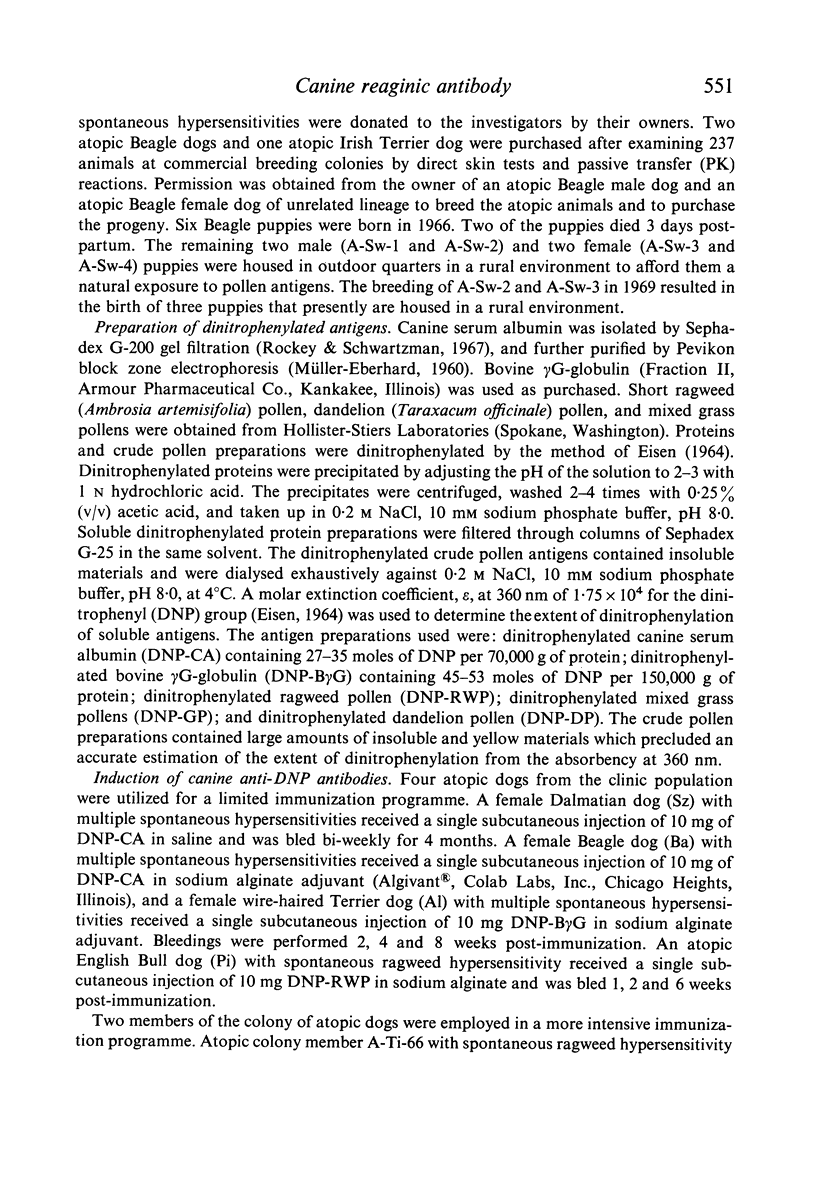
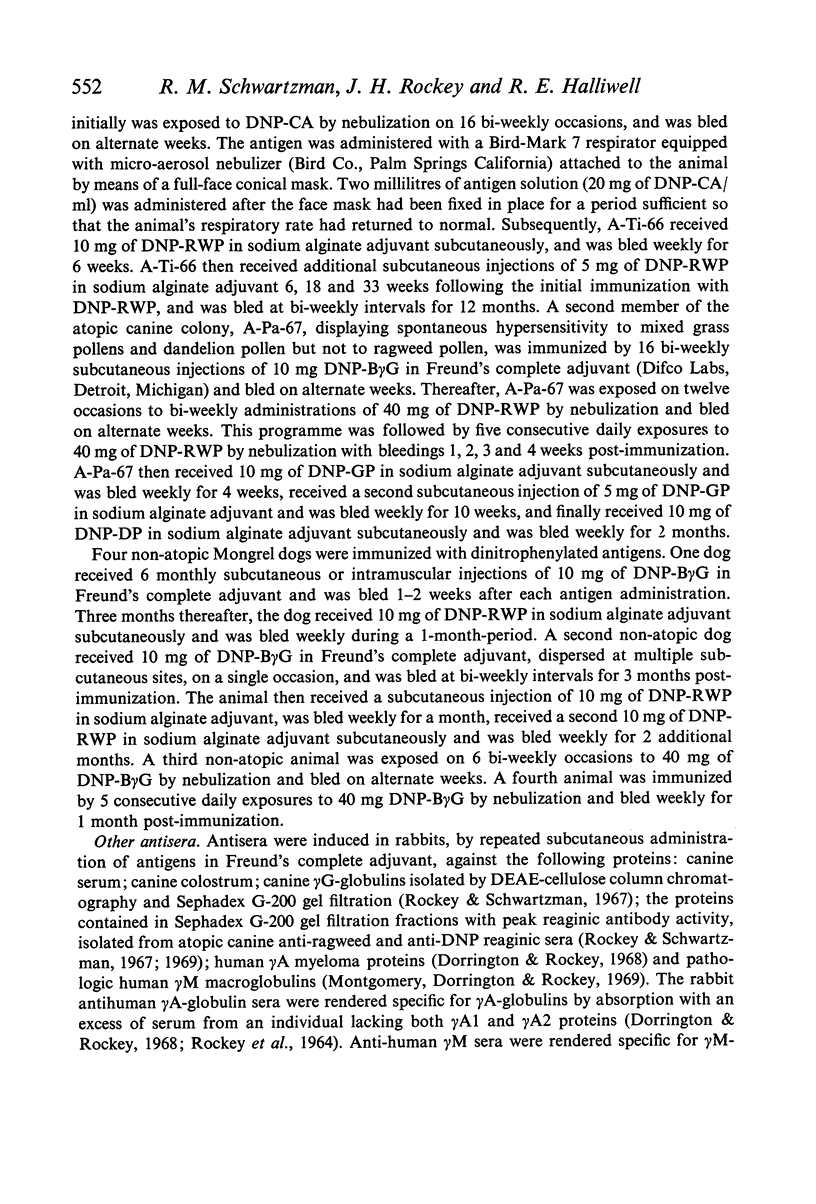
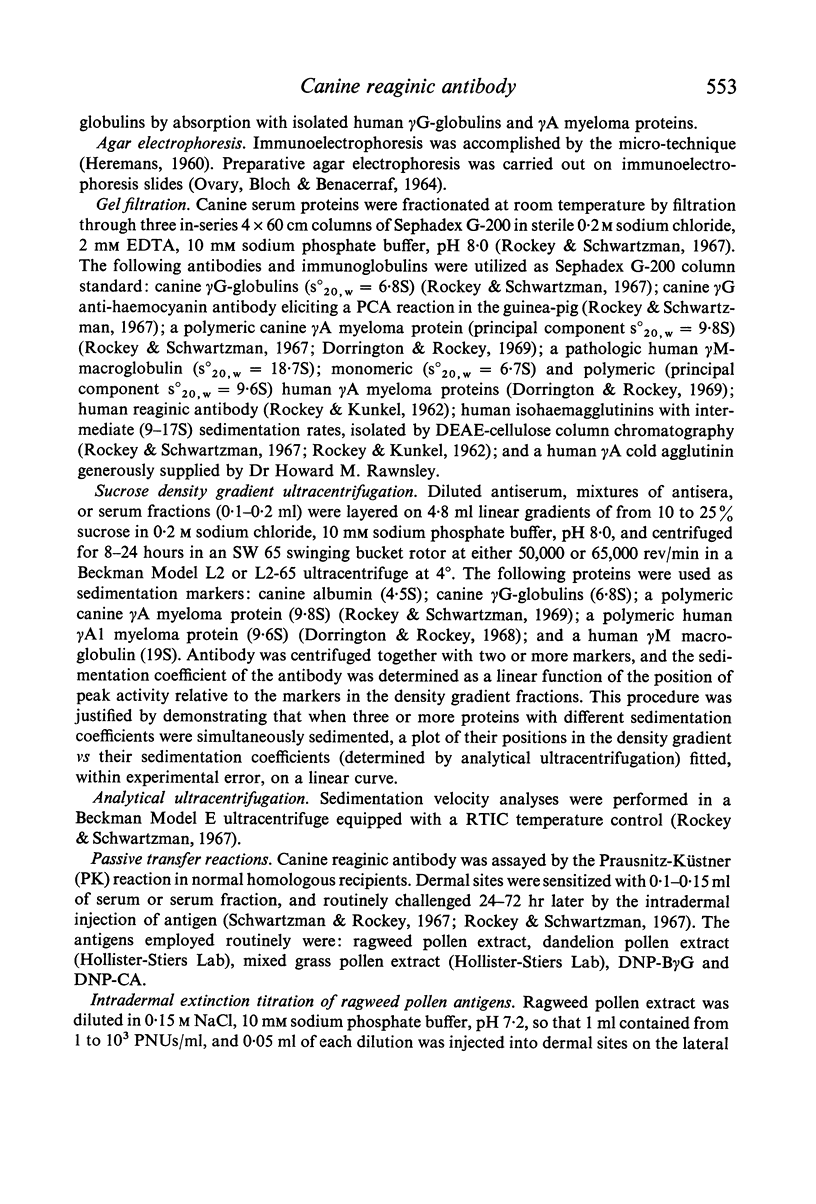
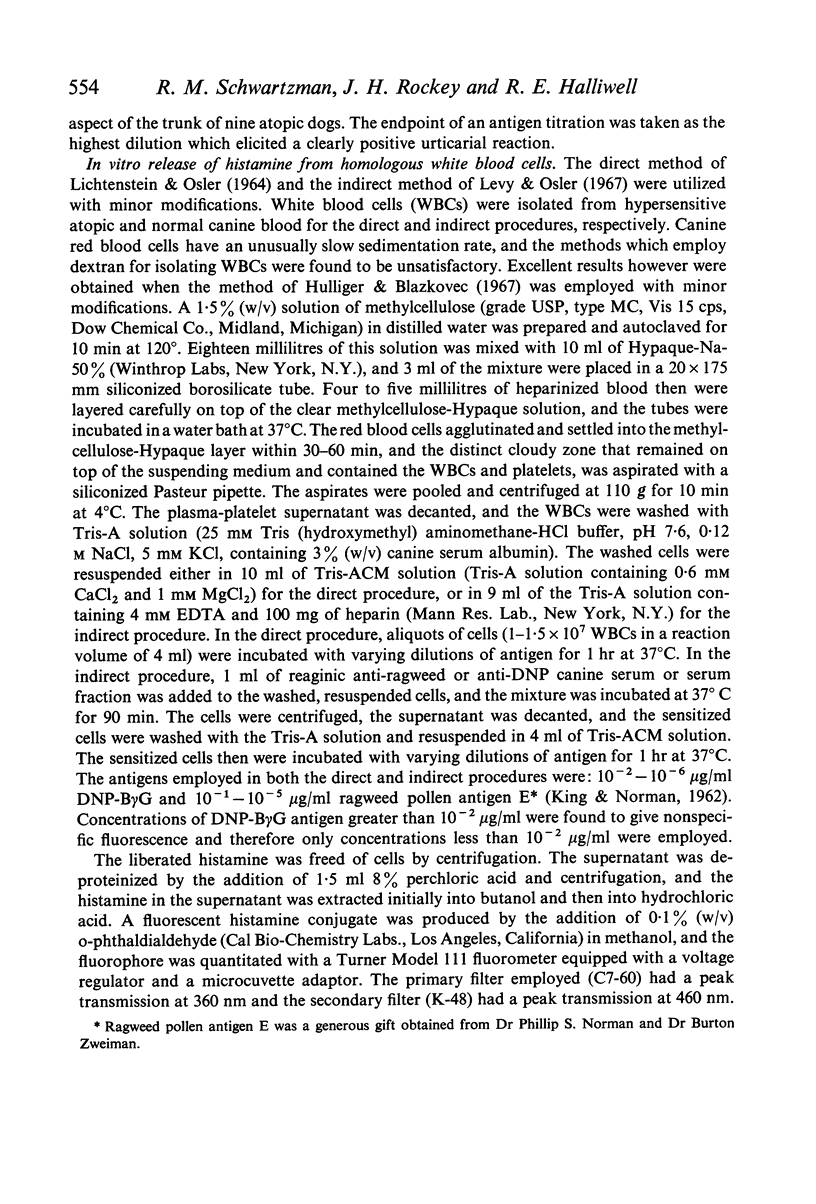
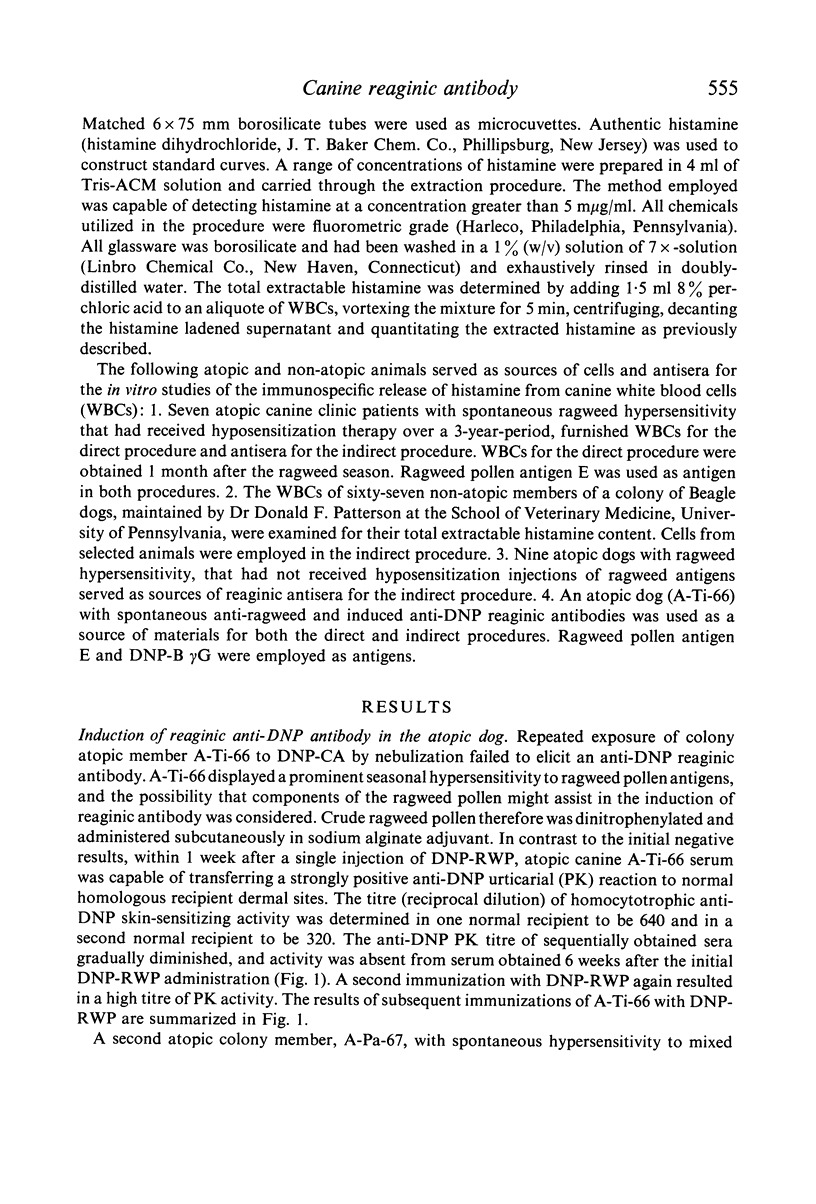
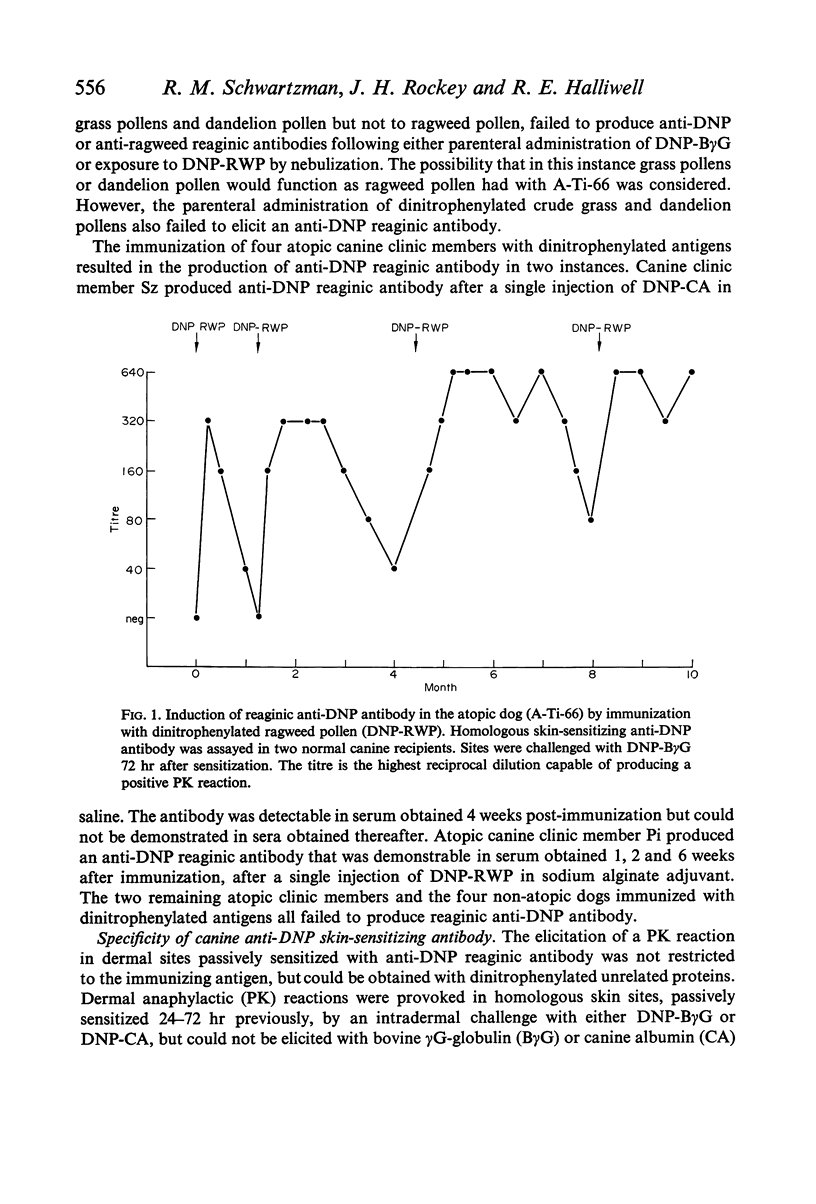
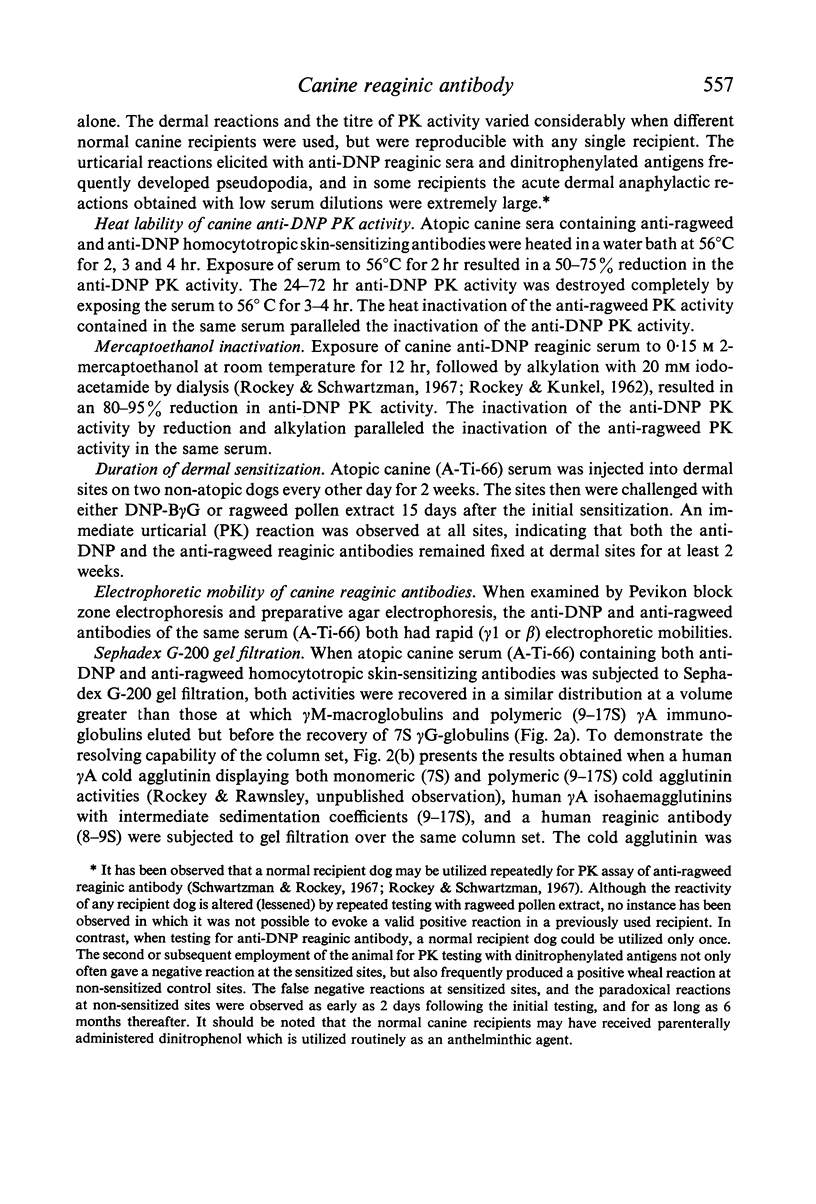
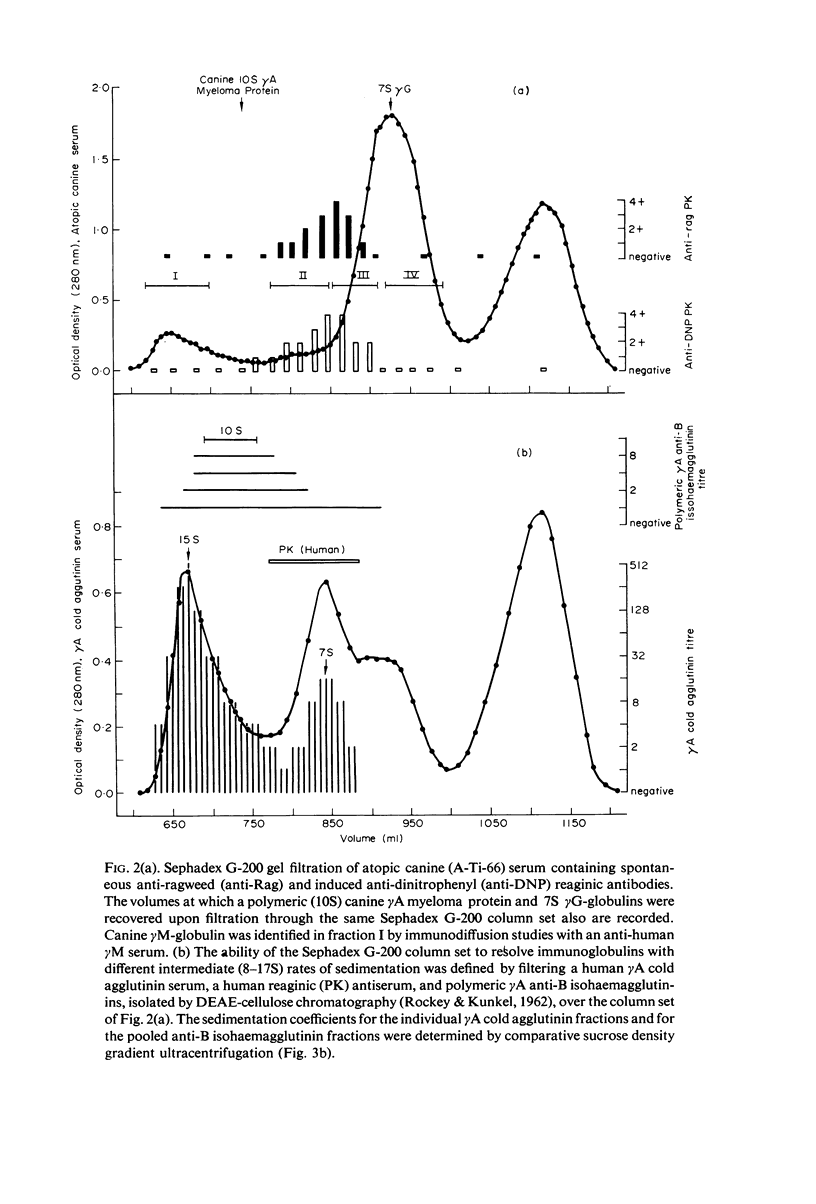
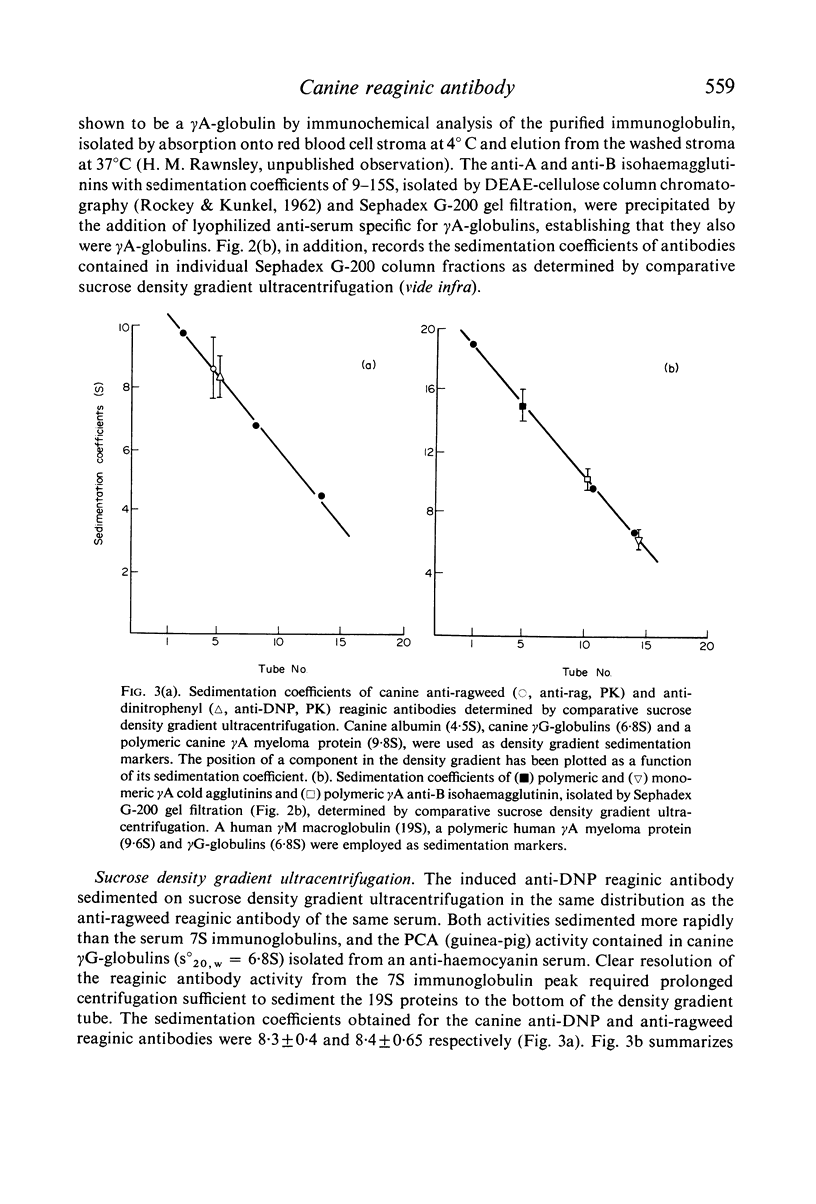
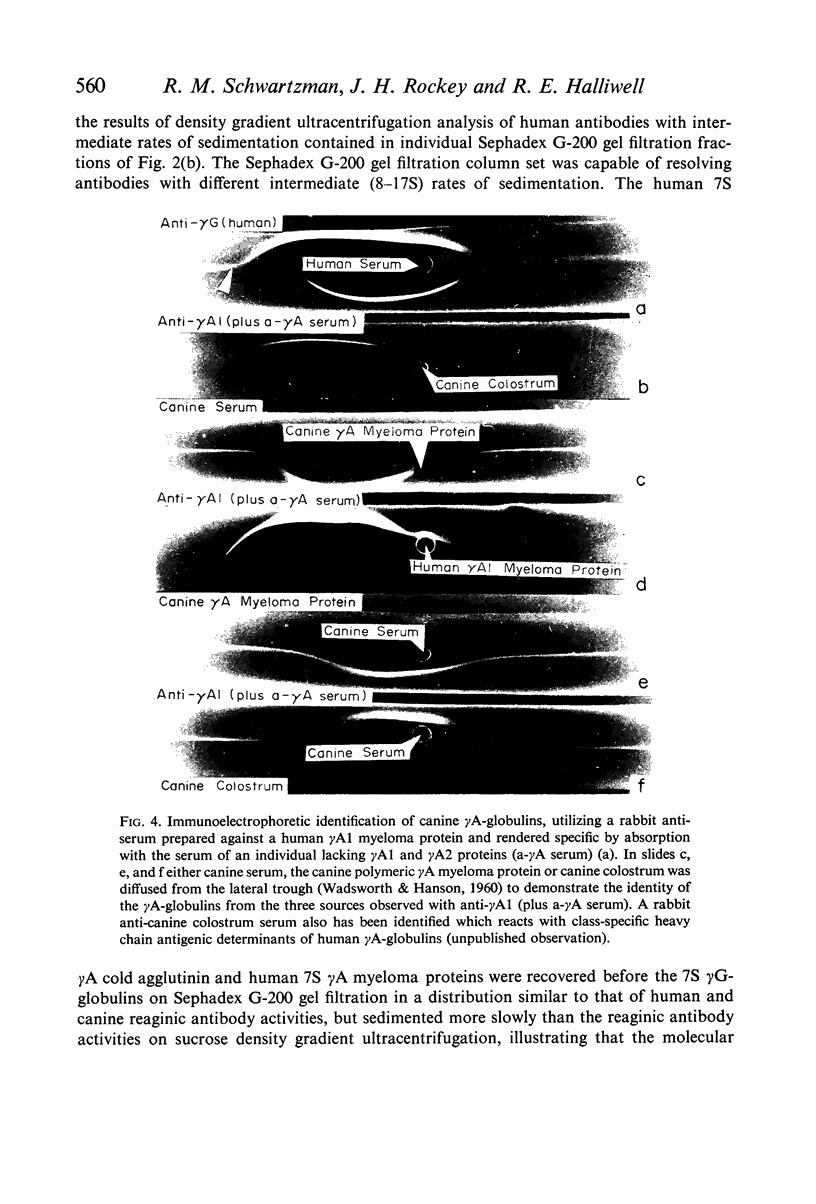
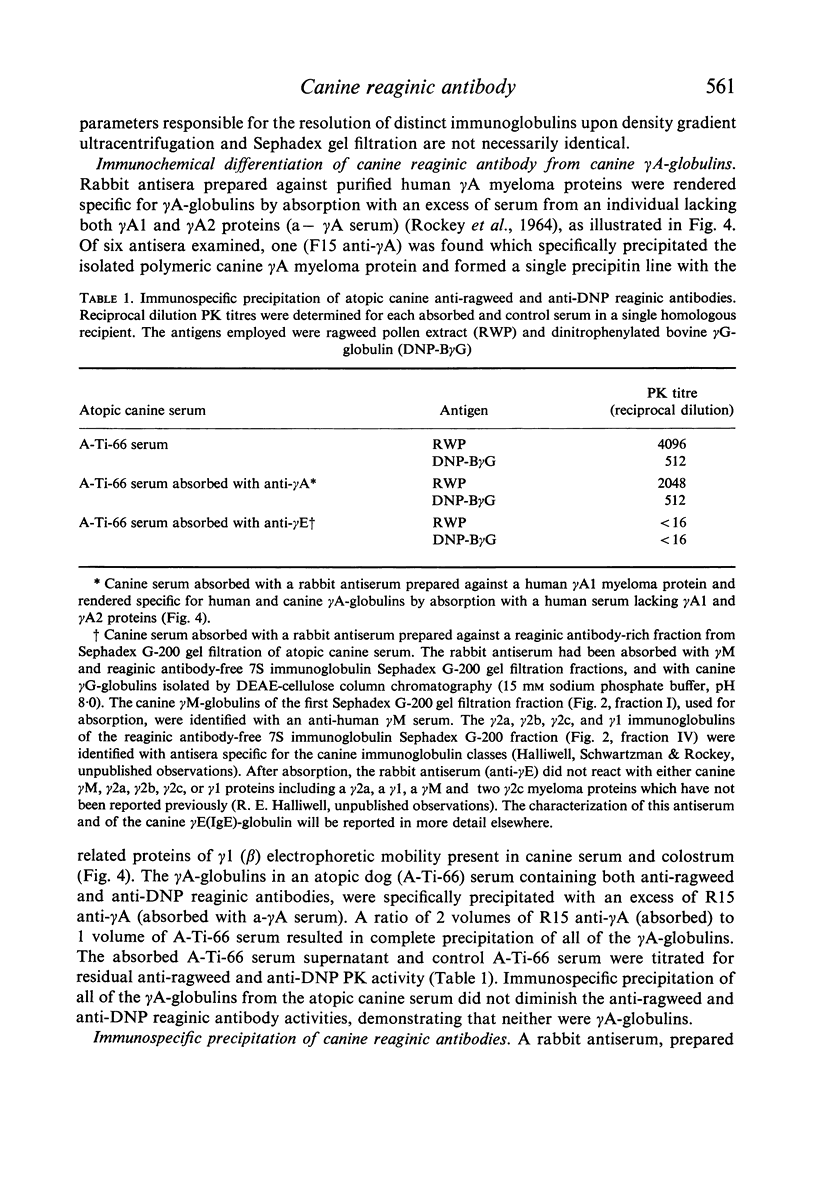
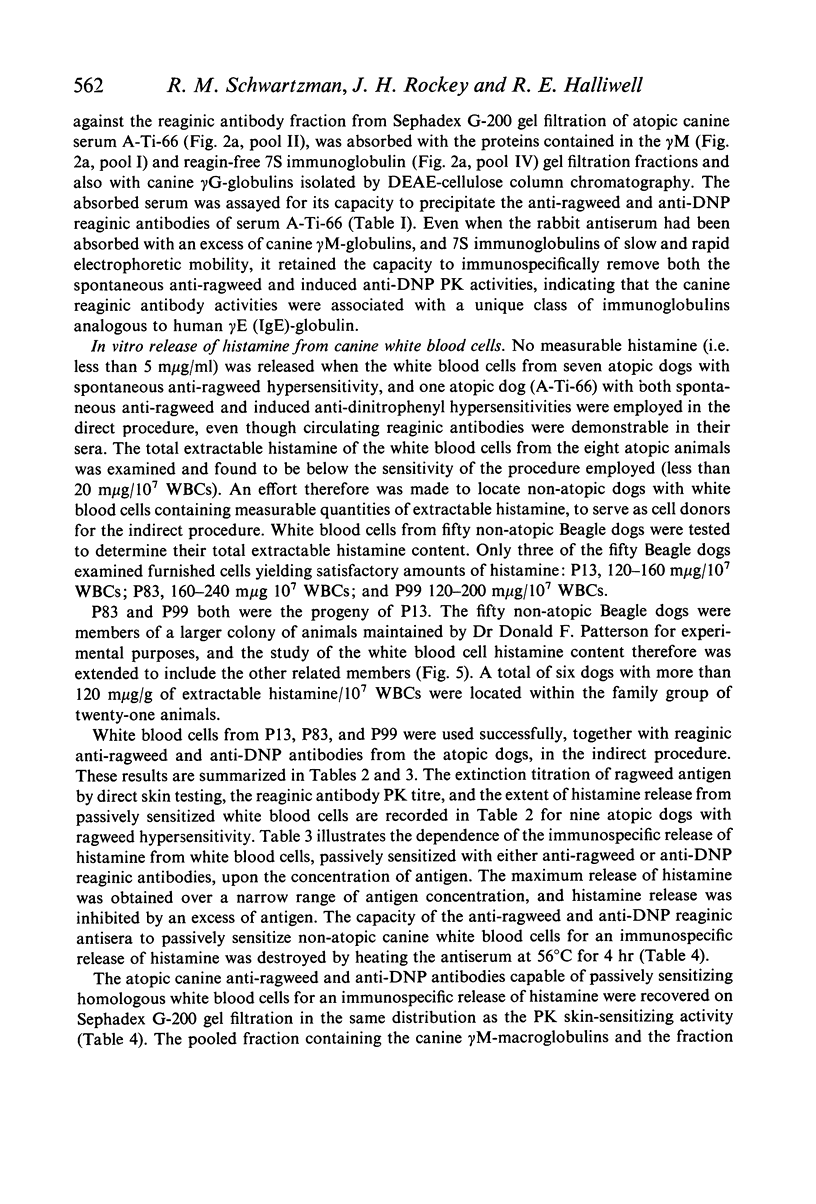
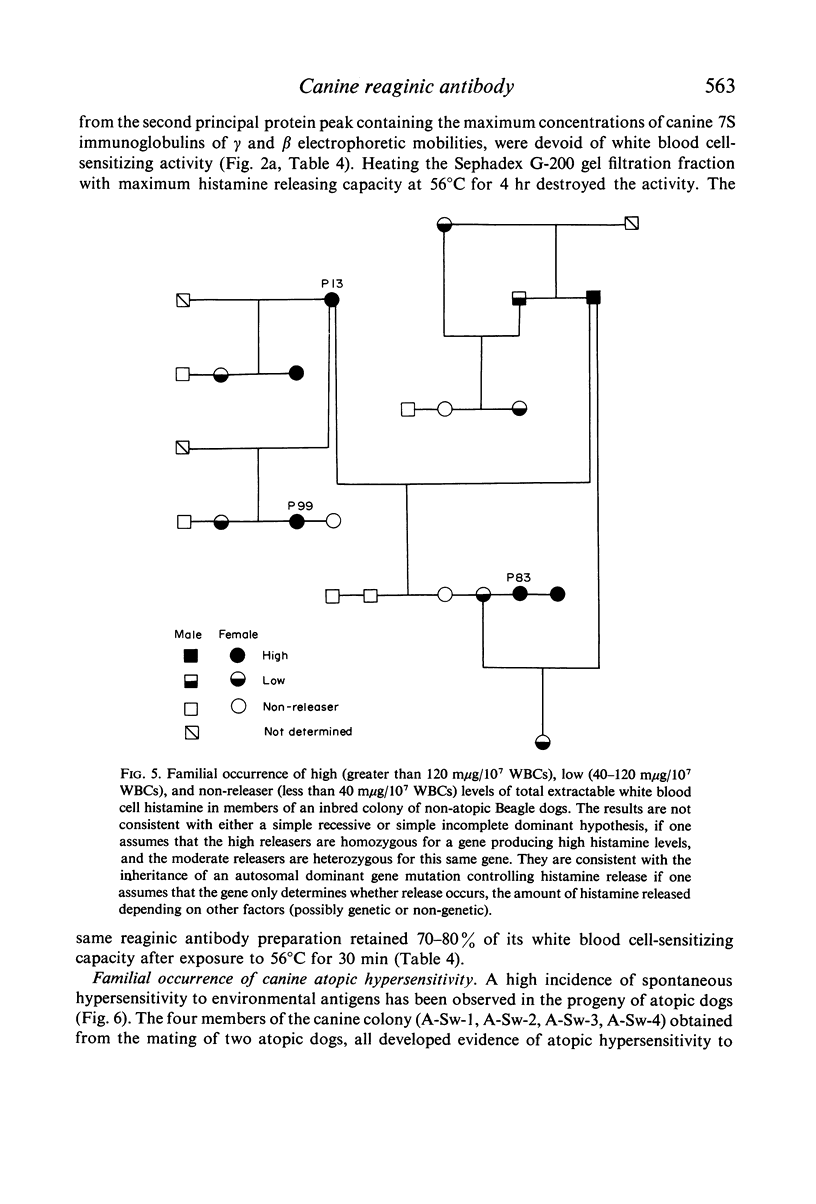
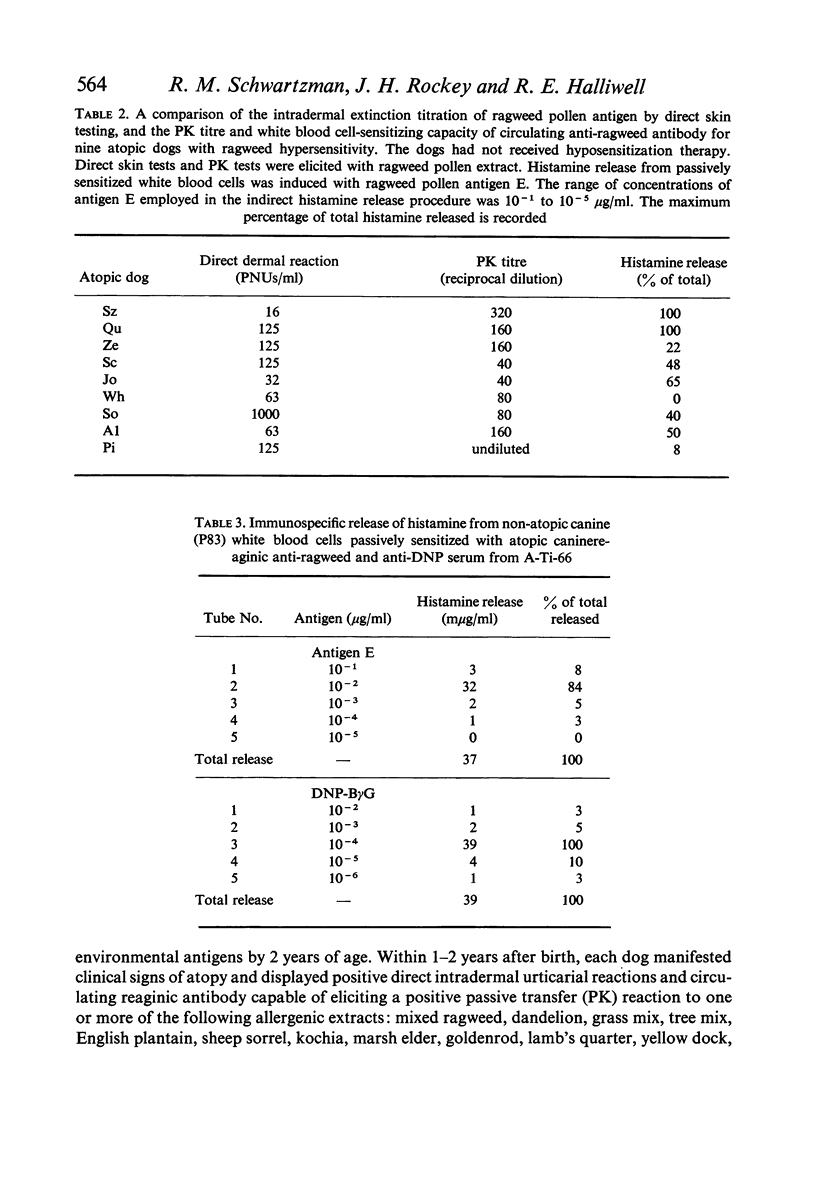
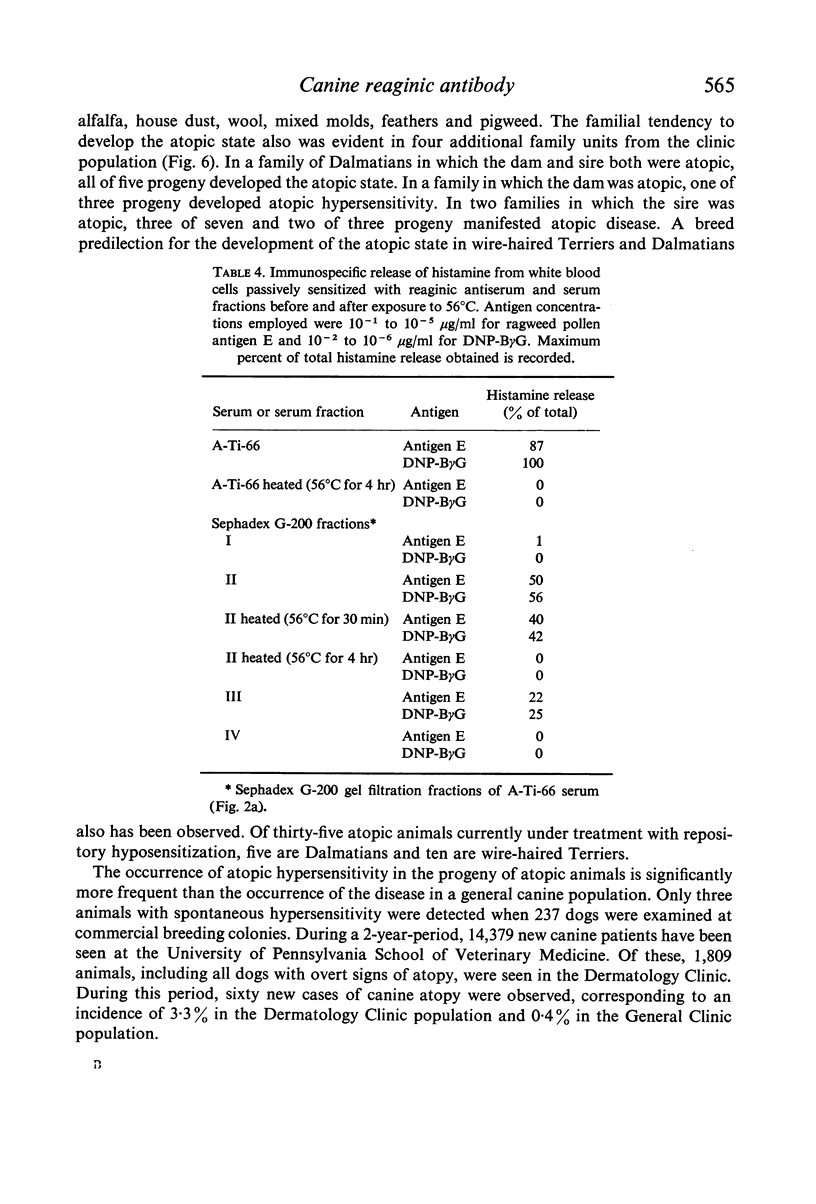
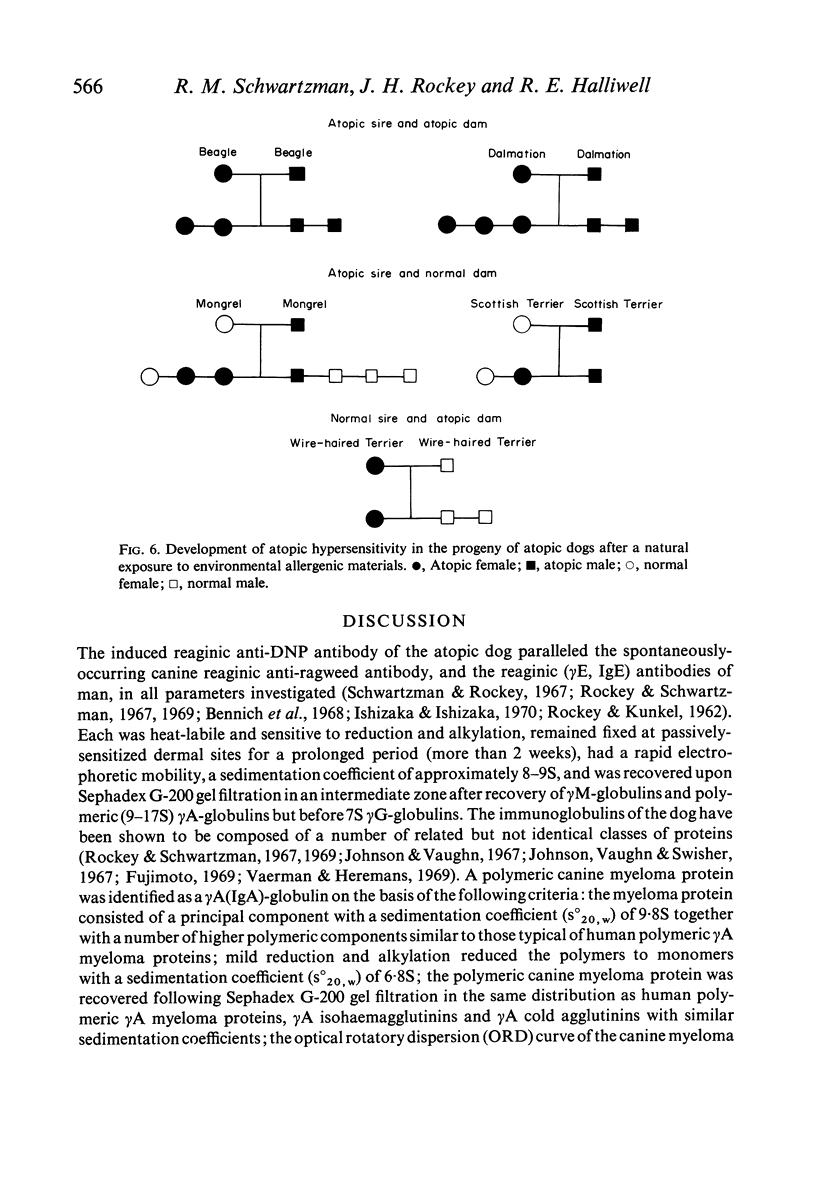
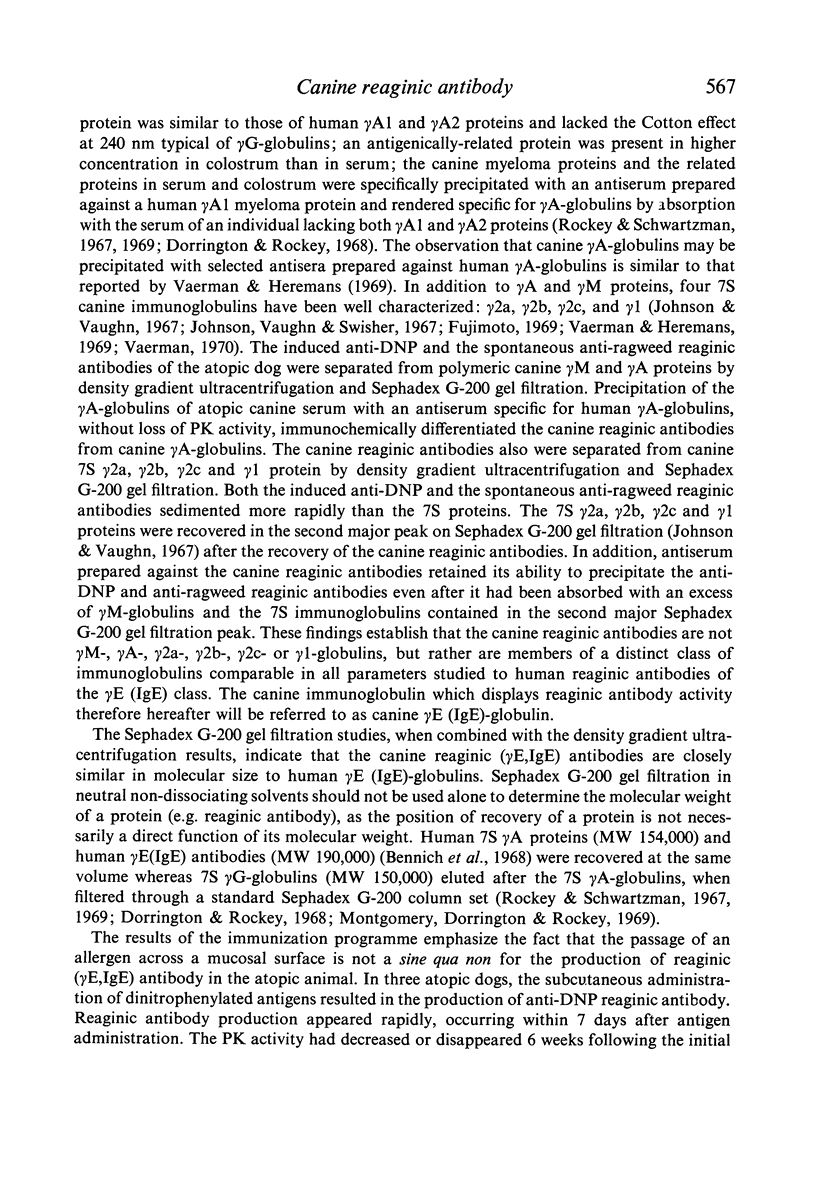
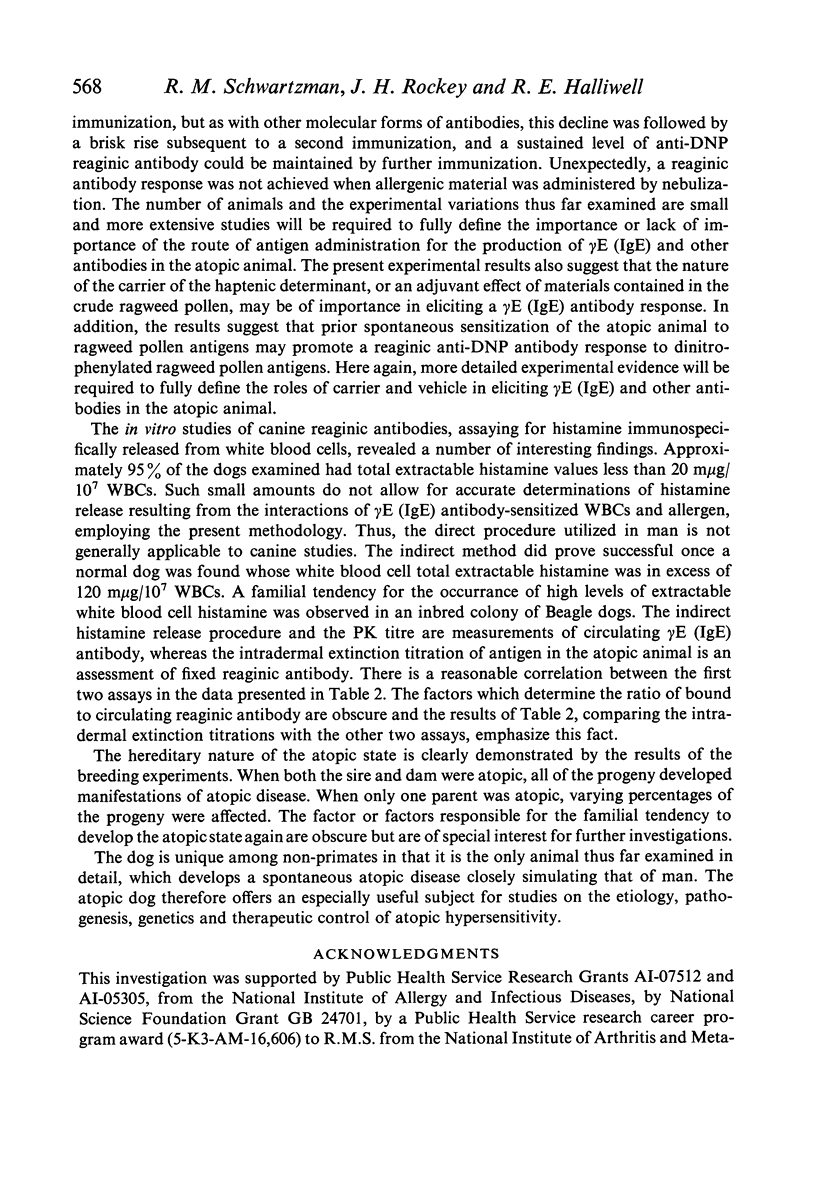
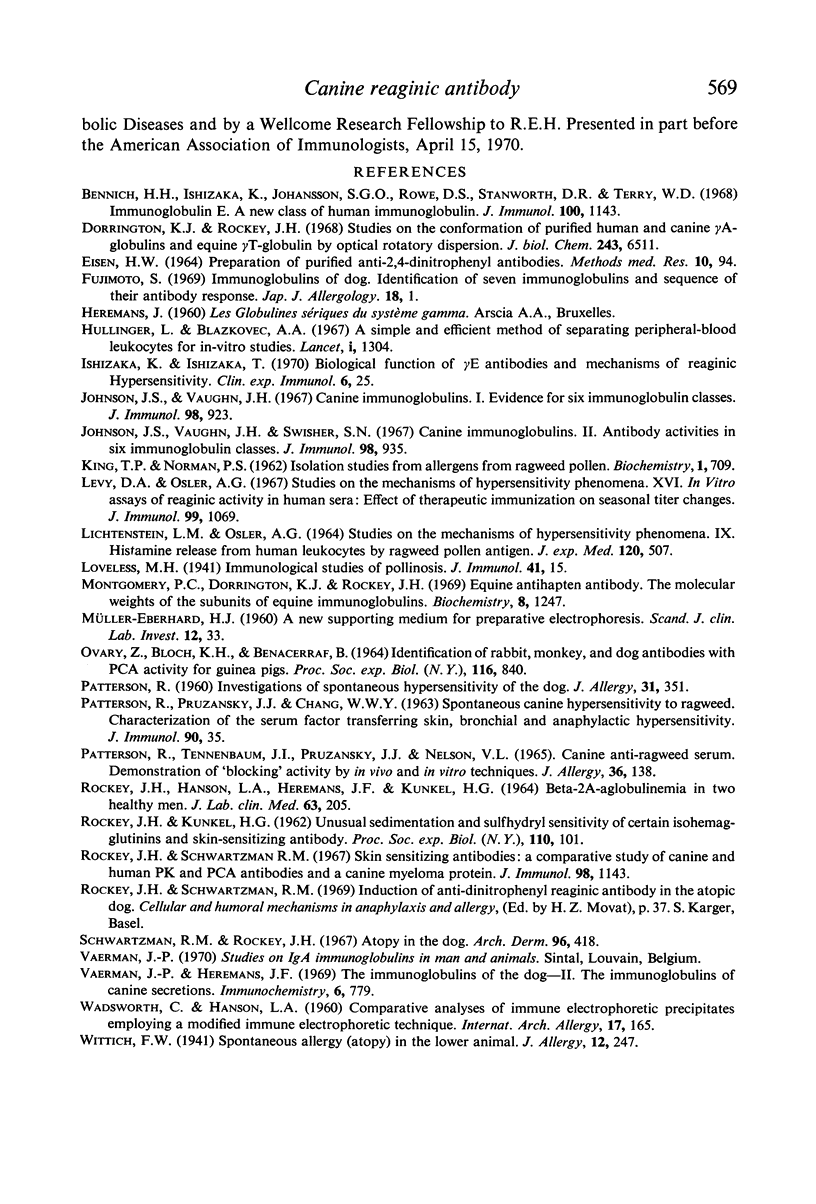
Images in this article
Selected References
These references are in PubMed. This may not be the complete list of references from this article.
- Dorrington K. J., Rockey J. H. Studies on the conformation of purified human and canine gamma-A-globulins and equine gamma-T-globulin by optical rotatory dispersion. J Biol Chem. 1968 Dec 25;243(24):6511–6519. [PubMed] [Google Scholar]
- EISEN H. N. PREPARATION OF PURIFIED ANTI-2,4-DINITROPHENYL ANTIBODIES. Methods Med Res. 1964;10:94–102. [PubMed] [Google Scholar]
- Fujimoto S. Immunoglobulins of dogs. Identification of seven immunoglobulins and sequence of their antibody response. Arerugi. 1969 Jan;18(1):1–15. [PubMed] [Google Scholar]
- Hulliger L., Blazkovec A. A. A simple and efficient method of separating peripheral-blood leucocytes for in-vitro studies. Lancet. 1967 Jun 17;1(7503):1304–1305. doi: 10.1016/s0140-6736(67)91596-6. [DOI] [PubMed] [Google Scholar]
- Immunoglobulin E. A new class of human immunoglobulin. J Immunol. 1968 May;100(5):1143–1143. [PubMed] [Google Scholar]
- Ishizaka K., Ishizaka T. Biological function of gamma E antibodies and mechanisms of reaginic hypersensitivity. Clin Exp Immunol. 1970 Jan;6(1):25–42. [PMC free article] [PubMed] [Google Scholar]
- Johnson J. S., Vaughan J. H. Canine immunoglobulins. I. Evidence for six immunoglobulin classes. J Immunol. 1967 May;98(5):923–934. [PubMed] [Google Scholar]
- Johnson J. S., Vaughan J. H., Swisher S. N. Canine immunoglobulins. II. Antibody activities in six immunoglobulin classes. J Immunol. 1967 May;98(5):935–940. [PubMed] [Google Scholar]
- KING T. P., NORMAN P. S. Isolation studies of allergens from regweed pollen. Biochemistry. 1962 Jul;1:709–720. doi: 10.1021/bi00910a027. [DOI] [PubMed] [Google Scholar]
- LICHTENSTEIN L. M., OSLER A. G. STUDIES ON THE MECHANISMS OF HYPERSENSITIVITY PHENOMENA. IX. HISTAMINE RELEASE FROM HUMAN LEUKOCYTES BY RAGWEED POLLEN ANTIGEN. J Exp Med. 1964 Oct 1;120:507–530. doi: 10.1084/jem.120.4.507. [DOI] [PMC free article] [PubMed] [Google Scholar]
- MULLER-EBERHARD H. J. A new supporting medium for preparative electrophoresis. Scand J Clin Lab Invest. 1960;12:33–37. [PubMed] [Google Scholar]
- Montgomery P. C., Dorrington K. J., Rockey J. H. Equine antihapten antibody. The molecular weights of the subunits of equine immunoglobulins. Biochemistry. 1969 Mar;8(3):1247–1258. doi: 10.1021/bi00831a060. [DOI] [PubMed] [Google Scholar]
- OVARY Z., BLOCH K. J., BENACERRAF B. IDENTIFICATION OF RABBIT, MONKEY, AND DOG ANTIBODIES WITH PCA ACTIVITY FOR GUINEA PIGS. Proc Soc Exp Biol Med. 1964 Jul;116:840–845. doi: 10.3181/00379727-116-29388. [DOI] [PubMed] [Google Scholar]
- PATTERSON R. Investigations of spontaneous hypersensitivity of the dog. J Allergy. 1960 Jul-Aug;31:351–363. doi: 10.1016/0021-8707(60)90071-x. [DOI] [PubMed] [Google Scholar]
- PATTERSON R., TENNENBAUM J. I., PRUZANSKY J. J., NELSON V. L. CANINE ANTIRAGWEED SERUM. DEMONSTRATION OF "BLOCKING" ACTIVITY BY IN VIVO AND IN VITRO TECHNIQUES. J Allergy. 1965 Mar-Apr;36:138–146. doi: 10.1016/0021-8707(65)90162-0. [DOI] [PubMed] [Google Scholar]
- ROCKEY J. H., HANSON L. A., HEREMANS J. F., KUNKEL H. G. BETA-2A AGLOBULINEMIA IN TWO HEALTHY MEN. J Lab Clin Med. 1964 Feb;63:205–212. [PubMed] [Google Scholar]
- ROCKEY J. H., KUNKEL H. G. Unusual sedimentation and sulfhydryl sensitivity of certain isohemagglutinins and skin-sensitizing antibody. Proc Soc Exp Biol Med. 1962 May;110:101–105. doi: 10.3181/00379727-110-27437. [DOI] [PubMed] [Google Scholar]
- Rockey J. H., Schwartzman R. M. Skin sensitizing antibodies: a comparative study of canine and human PK and PCA antibodies and a canine myeloma protein. J Immunol. 1967 Jun;98(6):1143–1151. [PubMed] [Google Scholar]
- Vaerman J. P., Heremans J. F. The immunoglobulins of the dog. II. The immunoglobulins of canine secretions. Immunochemistry. 1969 Nov;6(6):779–786. doi: 10.1016/0019-2791(69)90284-5. [DOI] [PubMed] [Google Scholar]
- WADSWORTH C., HANSON L. A. Comparative analysis of immune electrophoretic precipitates employing a modified immune electrophoretic technique. Int Arch Allergy Appl Immunol. 1960;17:165–177. doi: 10.1159/000229122. [DOI] [PubMed] [Google Scholar]



